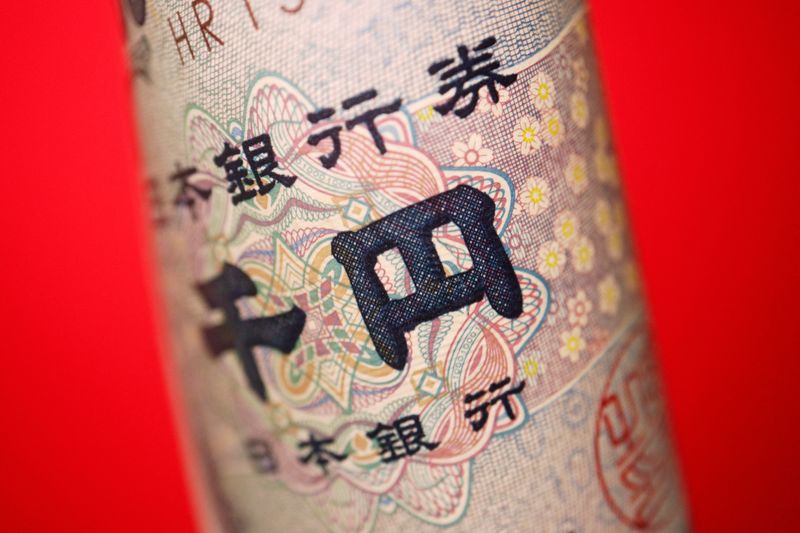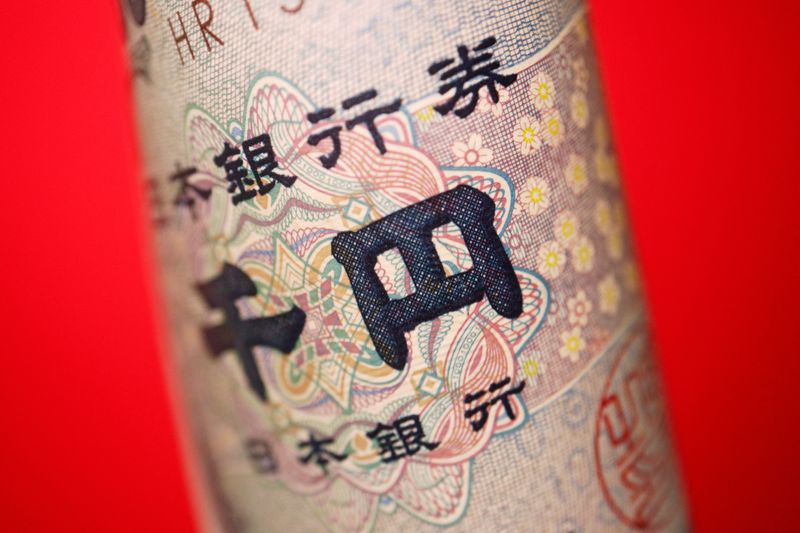Forex
Yen bulls stock up on options for any BOJ spring surprises


© Reuters. FILE PHOTO: A banknote of Japanese yen is seen in this illustration picture taken June 15, 2022. REUTERS/Florence Lo/Illustration/File Photo
By Rae Wee
SINGAPORE (Reuters) – Investors positioning for Japan’s first rate hike in nearly two decades have cooled on outright cash bets on the yen rising and turned to the options market to guard against any potential disappointment.
Japanese inflation has run above policymakers’ target for well over a year and Bank of Japan (BOJ) Governor Kazuo Ueda’s confidence that price gains are sustainable has strengthened an investor consensus that a rate rise will happen within months.
At the conclusion of its two-day policy meeting this week, the BOJ maintained its ultra-easy monetary settings but signalled its growing conviction that conditions for phasing out its huge stimulus were falling into place.
It is likely that higher short term rates would lift the yen and Japanese government bond yields, at least briefly.
A backdrop of markets dominated by U.S. data and the dollar, and a broad decline in foreign exchange volatility – which lowers options prices – has made options an attractive and risk-controlled way to trade the anticipated policy shift.
“Some players are positioned for a dollar/yen downside into March or April, because there’s still a chance for the BOJ to scrap (negative rates) at the March or April BOJ meetings,” said Yujiro Goto, head of FX strategy for Japan at Nomura.
“So I think a three-month option position makes more sense for speculators than cash short positions at the moment.”
For an up-front fee, or premium, an option allows investors to bet on currency moves without the risk of losses beyond the premium. A three-month contract could cover both meetings.
Three-month dollar/yen implied volatility, a measure of the cost of options contracts, has fallen through January to its lowest in about seven weeks.
That drop in volatility shows the one-sided nature of the bullish yen bets, while also making it cheaper to buy the options.
Depository Trust and Clearing Corporation (DTCC) data from LSEG shows dollar/yen options contracts worth a notional $1.9 billion were made within the last 30 days with expiries over the BOJ’s March meeting and strike prices between 133 and 152. The dollar last traded at 147.72 yen on Friday.
Contracts worth a notional $596 million cover the April meeting. A measure of the spread, or skew, between puts and calls also favours yen calls, suggesting options traders are wagering on the yen going up against the dollar.
To be sure, the skew has narrowed in recent weeks.
Data from the U.S. Commodity Futures Trading Commission shows that overall, the market is short yen because it can be borrowed so cheaply and sold for income-earning assets.
“While you do still have negative rates in Japan, we see that (as a) relatively attractive funding currency,” said Michael Dyer, investment director of multi-asset at M&G Investments.
Still, the latest net size of the short yen position has dropped to its lowest in 10-1/2 months of $4.8 billion and bond yields in Japan have begun to go up sharply as bets of an imminent BOJ move ramp up.
The 10-year Japanese government bond (JGB) yield has since climbed nearly 50 basis points from its 2023 low of 0.24% last March.
The yen, meanwhile, has failed to reflect these rising expectations of a shift in the nation’s monetary policy, as a still-dominant U.S. dollar has dragged on the Japanese currency.
“Since the beginning of this year, it has been difficult to find a strong yen trend in dollar/yen, and I think more and more investors prefer to bet with options,” said Hirofumi Suzuki, chief FX strategist at SMBC in Tokyo.
“If the BOJ moves, the yen is expected to appreciate by about five yen from the current level. Therefore, (dollar/yen) is expected to fall below 140.”

 Forex3 years ago
Forex3 years agoForex Today: the dollar is gaining strength amid gloomy sentiment at the start of the Fed’s week

 Forex3 years ago
Forex3 years agoUnbiased review of Pocket Option broker

 Forex3 years ago
Forex3 years agoDollar to pound sterling exchange rate today: Pound plummeted to its lowest since 1985

 Forex3 years ago
Forex3 years agoHow is the Australian dollar doing today?

 Cryptocurrency3 years ago
Cryptocurrency3 years agoWhat happened in the crypto market – current events today

 World3 years ago
World3 years agoWhy are modern video games an art form?

 Commodities3 years ago
Commodities3 years agoCopper continues to fall in price on expectations of lower demand in China

 Economy3 years ago
Economy3 years agoCrude oil tankers double in price due to EU anti-Russian sanctions


























